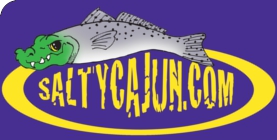


 |

|

|
|
|||||||
| Inshore Saltwater Fishing Discussion Discuss inshore fishing, tackle, and tactics here! |
 |
|
|
Thread Tools | Display Modes |
|
#61
|
||||
|
||||
|
Quote:
|
|
#62
|
||||
|
||||
|
Quote:
|
|
#63
|
||||
|
||||
|
If man would leave most things alone, NATURE would take care of itself. We can help, but we'll never control it..
|
|
#64
|
||||
|
||||
|
I've heard old timers talk about how back in the day before the channel they would sometimes catch tarpon in Prien and other times they caught bass. wish I were around when it was a natural estuary.
|
|
#65
|
||||
|
||||
|
Quote:
MG, need a link to that 2000 USGS study you keep quoting please |
|
#66
|
|||
|
|||
|
So what is nature to do when it can't take care of itself because of human alterations? The problems in the cameron-creole are directly linked to the saltwater intrusion caused by the Calcasieu Ship Channel. The vegetation was dying so rapidly that there was nothing to take its place.
|
|
#67
|
||||
|
||||
|
Quote:
Big Lake has a wide open coupling between the lake and channel at the S end that is about 15 times longer than the coupling between the channel and S end of Sabine. The salt water coupling from the Gulf to the lake is much stronger on Big Lake. The wide open gap between channel and lake at the S end of Big Lake is the place to stop the salt. |
|
#68
|
||||
|
||||
|
Quote:
|
|
#69
|
||||
|
||||
|
Quote:
Sent from my LGL45C using Tapatalk 2 |
|
#70
|
||||
|
||||
|
I understand now with the human alteration it can't just be left to nature in saying direct link to ship channel and continued dredging so will creating a narrower passage via longer jetty or rocks coupled with a more limited controlling weir than now be a beneficial means of just closing the weir have to say this conversation has given me a broader understanding of the Lakes issues
I also had a question when we talk about more fresh water coming into Sabine does the locks and saltwater barrier hurt more than help |
|
#71
|
||||
|
||||
|
I know enough about fishing this lake to know the weirs are a major problem.
Fish are not holding because the bait is not here It's freaken April almost May and I have not seen one group of birds picking shrimp( heard a few who saw a group or two lately) Over oystering is also a problem and too deep a ship channel is also a problem So right now we have a perfect storm!!
__________________
Waltrip's Saltwater Guide Service jeremy@geaux-outdoors.com https://m.facebook.com/waltrip.guideservice?id=148838538646862&_rdr |
|
#72
|
||||
|
||||
|
Quote:
|
|
#73
|
||||
|
||||
|
CCA get off there azz and do some marsh restoration instead of sunshine pumping a useless half million dollar reef maybe we can save the marsh and allow weirs to stay open
Hell I bet we could start a save the Marsh foundation to raise money to restore marsh on a trade to leave them open
__________________
Waltrip's Saltwater Guide Service jeremy@geaux-outdoors.com https://m.facebook.com/waltrip.guideservice?id=148838538646862&_rdr |
|
#74
|
||||
|
||||
|
I quit reading when someone asked what Mother Nature did before the weirs...
|
|
#75
|
|||
|
|||
|
Quote:
|
|
#76
|
||||
|
||||
|
If there was a way to get a foundation going and set up a meeting with the weir guys
We could have a fundraiser start it up
__________________
Waltrip's Saltwater Guide Service jeremy@geaux-outdoors.com https://m.facebook.com/waltrip.guideservice?id=148838538646862&_rdr |
|
#77
|
|||
|
|||
|
Find some contacts Mr. Big Shot. I got confidence in you. I'll gladly jump in on that. I'll even be your VP. I can see it now, Waltrip and Smalls, long time rivals, tag teamin to save the marsh and Big Lake.
|
|
#78
|
||||
|
||||
|
I know a lot of people who would join including myself first get a following then funding then the meetings with the boards will happen you have to get people and money for them to feel pressure
|
|
#79
|
|||
|
|||
|
The Big Lake Coalition. I think that sounds appropriate.
|
|
#80
|
||||
|
||||
|
Quote:
By installing salinity sensors on the lake side and the marsh side, you can open the gates any time conditions show that open gates would lead to a net flow of salt out of the marsh and close them when actual local conditions show open gates would add salt to the marsh. Until this is handled, efforts at replanting vegetation are risky because improper weir management will let too much salt into the marsh and kill the veggies. |
 |
| Bookmarks |
|
|
